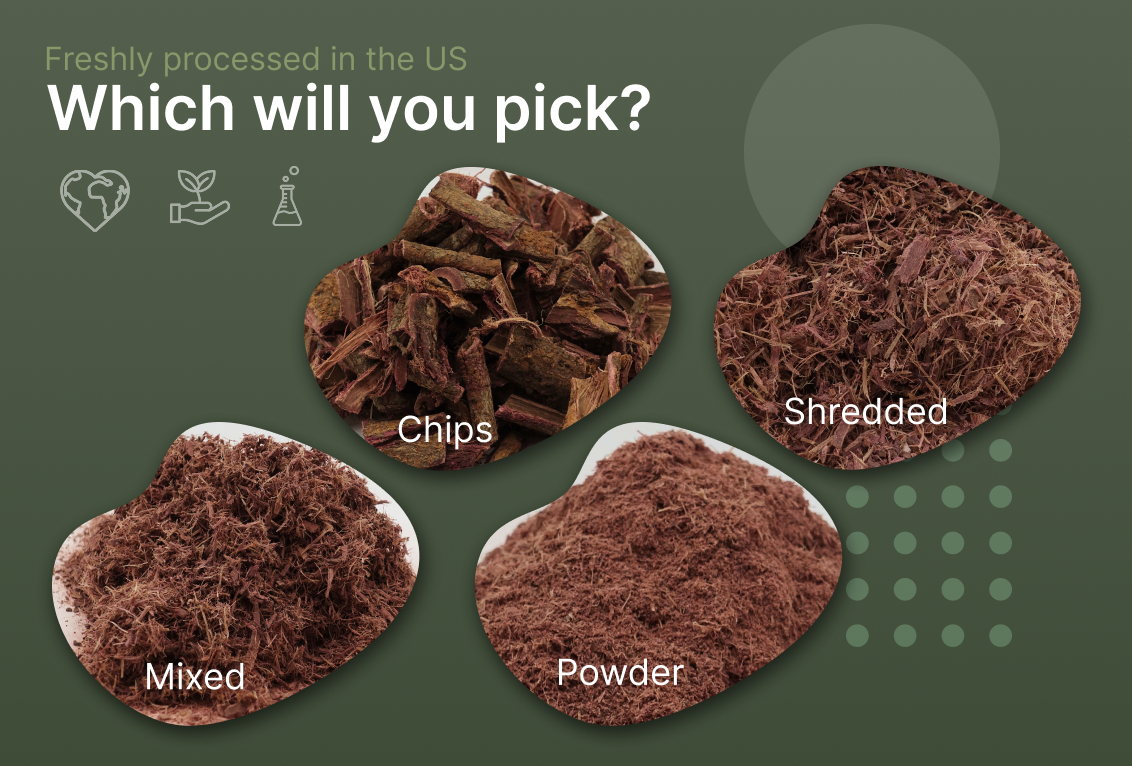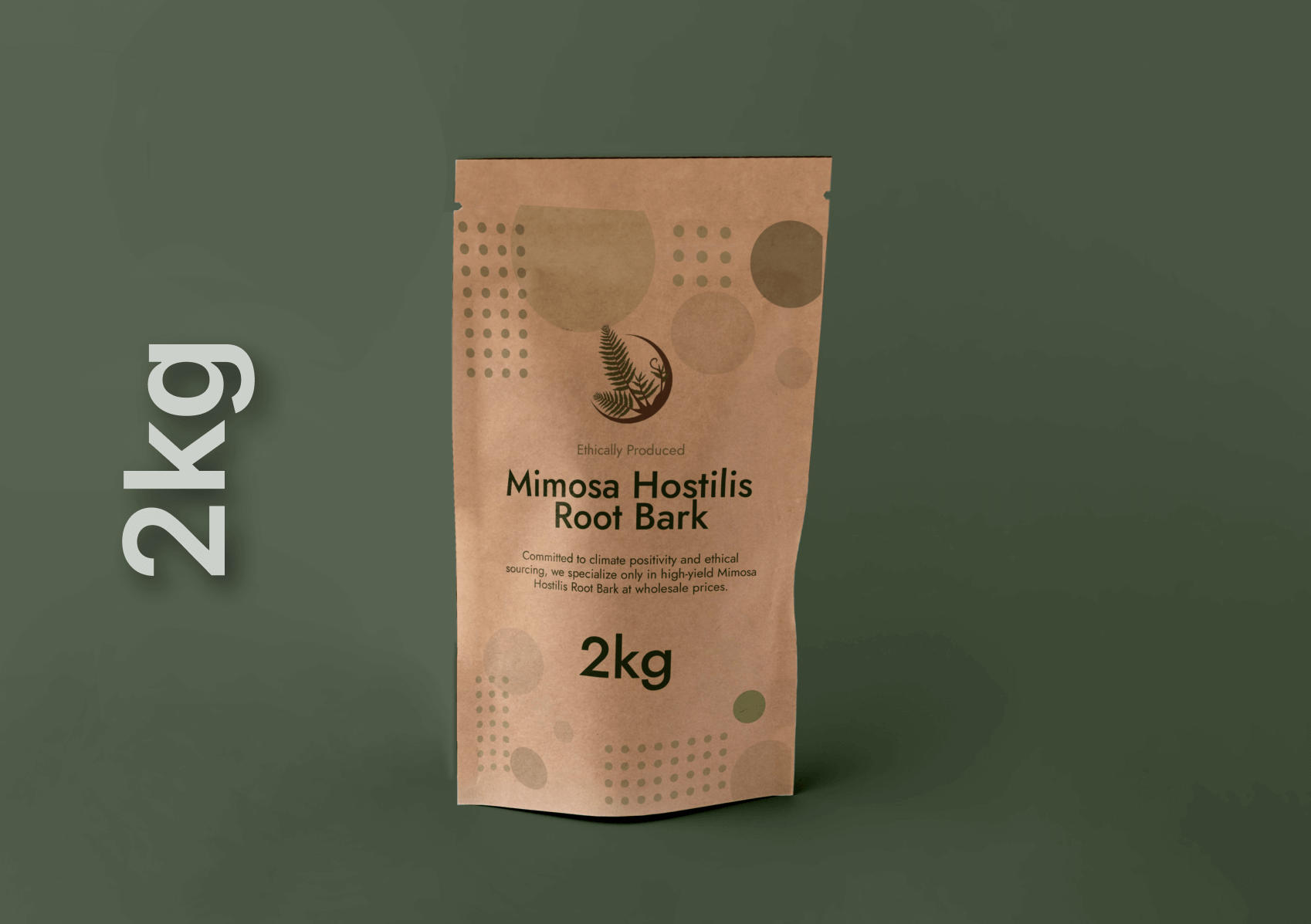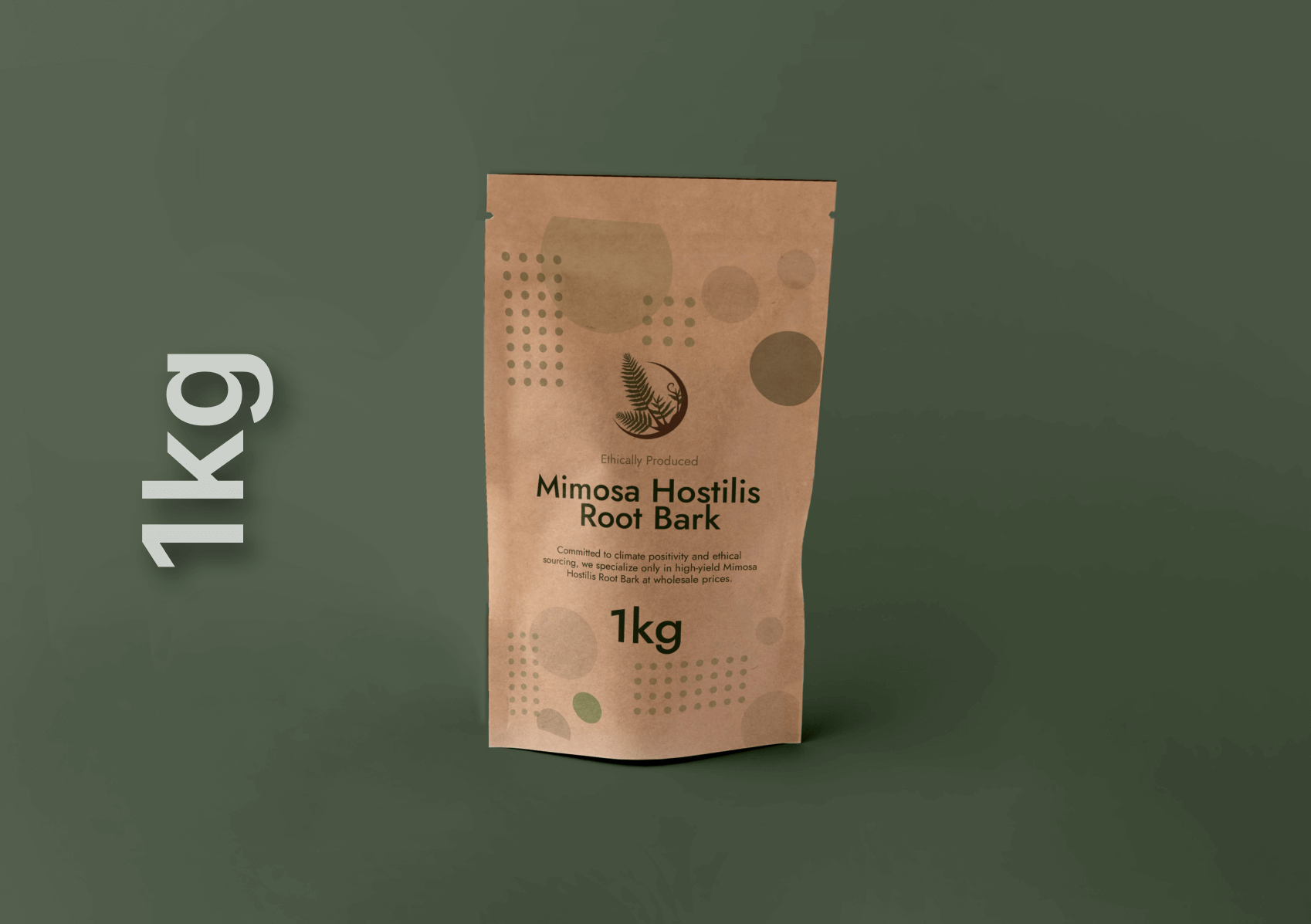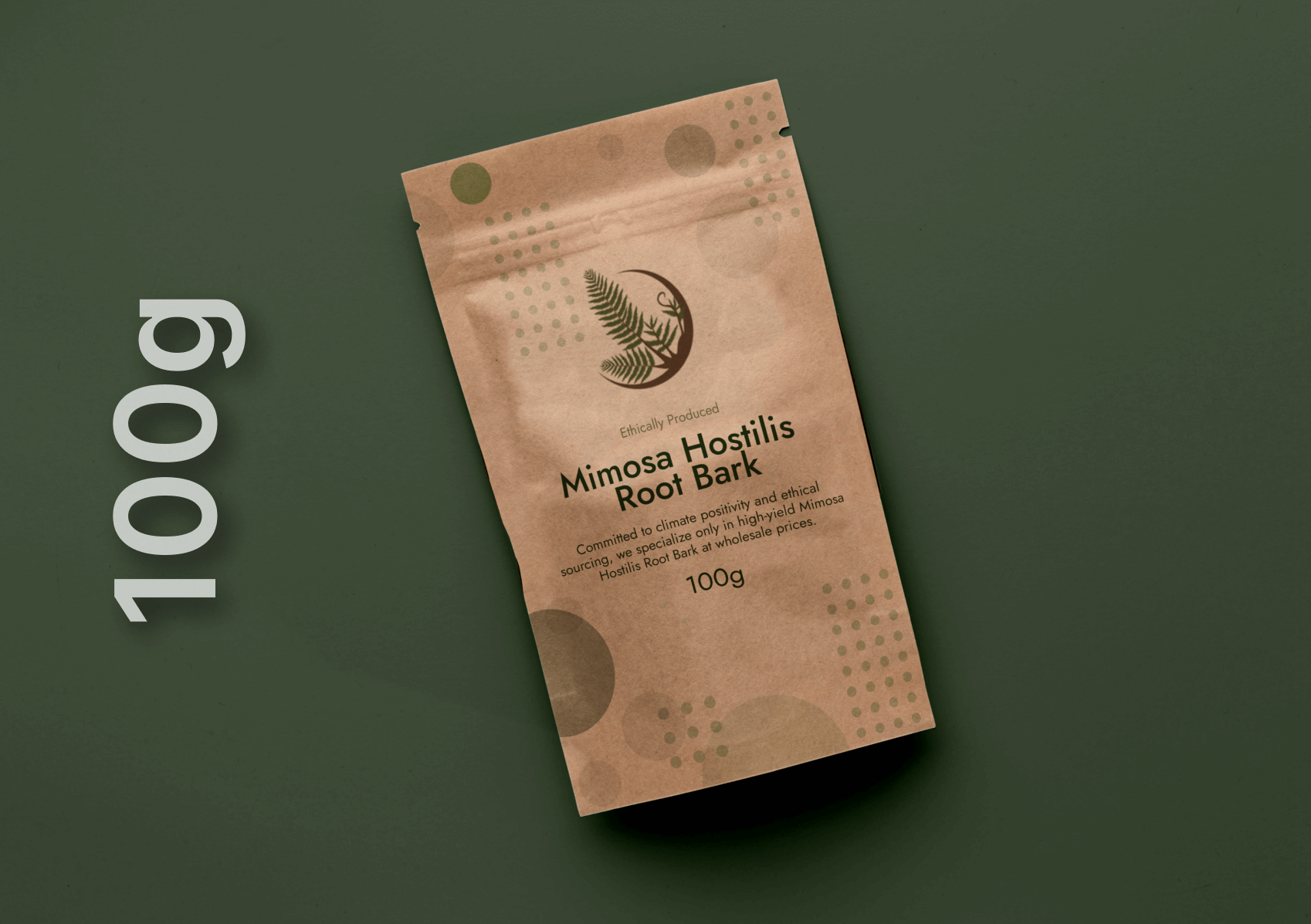Understanding Tepezcohuite: The Healing Bark
What is Tepezcohuite?
Tepezcohuite, scientifically known as Mimosa tenuiflora or Mimosa hostilis, is a remarkable tree bark that has captured the attention of skincare enthusiasts worldwide. This powerful botanical ingredient comes from a small tree native to southern Mexico and northern South America. The name “Tepezcohuite” originates from the Nahuatl language, meaning “metal tree,” reflecting its incredible healing properties that have been recognized for centuries.
The bark contains an impressive array of bioactive compounds that make it exceptional for skincare applications. Traditional healers in Mexico have used Tepezcohuite for generations to treat burns, wounds, and various skin conditions. Modern research has validated many of these traditional uses, revealing the scientific basis behind its remarkable healing abilities.
The Science Behind Tepezcohuite’s Healing Properties
The therapeutic power of Tepezcohuite lies in its rich chemical composition. The bark contains high concentrations of tannins, saponins, and flavonoids, each contributing to its skin-healing properties. Tannins provide astringent qualities that help tighten and tone the skin, while saponins offer natural cleansing and anti-inflammatory benefits.
Research has identified several key compounds responsible for Tepezcohuite’s regenerative effects. These include quercetin, a powerful antioxidant that protects against free radical damage, and various alkaloids that support cellular repair processes. Clinical studies have shown that Tepezcohuite can accelerate wound healing by up to 30% compared to untreated areas.
The bark also contains natural collagen precursors that support the skin’s structural integrity. These compounds help maintain skin elasticity and promote the formation of new, healthy skin cells. This makes Tepezcohuite particularly valuable for anti-aging skincare formulations.
Origins and Sustainable Sourcing
The Mimosa tenuiflora tree grows naturally in the dry forests of southern Mexico, particularly in the states of Oaxaca and Chiapas. The tree is remarkably resilient, able to survive in harsh conditions and regenerate quickly after harvesting. This natural resilience makes it an excellent candidate for sustainable harvesting practices.
Ethical sourcing of Tepezcohuite involves working directly with indigenous communities who have traditional knowledge of proper harvesting techniques. These communities understand how to harvest the bark without damaging the tree, ensuring continued growth and regeneration. Sustainable harvesting typically involves taking only the outer bark from mature trees, allowing the inner bark to remain intact.
Many suppliers now work with certified organic farms that cultivate Mimosa tenuiflora specifically for commercial use. These operations follow strict guidelines to ensure environmental protection while providing economic opportunities for local communities.
Quality Standards and Identification
High-quality Tepezcohuite powder should have a distinctive reddish-brown to purple color, indicating the presence of active compounds. The texture should be fine and consistent, without large chunks or foreign materials. Premium-grade Tepezcohuite typically comes from the inner root bark, which contains higher concentrations of active compounds compared to stem bark.
When purchasing Tepezcohuite, look for suppliers who provide detailed information about their sourcing methods and processing techniques. Reputable vendors will offer laboratory analysis reports showing the concentration of active compounds and confirming the absence of contaminants.
Market Trends and Consumer Demand
The global market for botanical skincare ingredients has grown significantly, with natural and organic products now representing over 25% of the total skincare market. Tepezcohuite has gained particular attention as consumers seek alternatives to synthetic ingredients and chemical treatments.
Market research indicates that products containing Tepezcohuite have seen a 40% increase in demand over the past five years. This growth is driven by increased awareness of traditional medicine and a growing preference for sustainably sourced ingredients.

The Current Landscape of Tepezcohuite in Skincare
Commercial Applications and Product Development
The cosmetic industry has embraced Tepezcohuite as a premium ingredient in various formulations. Major skincare brands now incorporate this botanical extract into face masks, serums, creams, and healing balms. The ingredient’s versatility makes it suitable for products targeting different skin concerns, from anti-aging to acne treatment.
Professional spas and dermatology clinics increasingly offer Tepezcohuite-based treatments. These professional applications often use higher concentrations of the active ingredient, providing more intensive healing and regeneration benefits. Treatment protocols typically involve a series of applications over several weeks to achieve optimal results.
DIY Skincare Movement and Home Applications
The DIY skincare movement has created significant interest in raw Tepezcohuite powder for home use. Consumers appreciate the ability to create fresh, customized formulations without preservatives or artificial additives. This trend has led to increased availability of high-quality Tepezcohuite powder through online retailers and specialty stores.
Home preparation methods have evolved to include various techniques for maximizing the bioavailability of active compounds. These include different extraction methods, combination with complementary ingredients, and specific application protocols for different skin types.
Safety Considerations and Best Practices
While Tepezcohuite is generally safe for topical use, proper preparation and application techniques are essential. The powder should never be applied directly to open wounds without proper preparation. Most applications involve creating a paste or infusion that dilutes the active compounds to safe levels.
Patch testing is recommended before first use, particularly for individuals with sensitive skin or known allergies to plant materials. The test should be performed on a small area of skin at least 24 hours before full application.
Creating Your Tepezcohuite Face Mask: Essential Knowledge
Understanding Different Preparation Methods
Creating an effective Tepezcohuite face mask requires understanding the various preparation methods available. Each method extracts different compounds from the bark, resulting in distinct benefits for the skin. The most common approaches include direct powder mixing, water extraction, and oil infusion techniques.
Direct powder mixing involves combining finely ground Tepezcohuite powder with liquid ingredients to form a paste. This method provides immediate access to water-soluble compounds while maintaining the full spectrum of available nutrients. The resulting mask typically has a slightly gritty texture that provides gentle exfoliation benefits.
Water extraction methods involve steeping the powder in hot water to create a concentrated liquid extract. This technique draws out tannins and flavonoids more effectively, creating a smoother liquid base for mask preparation. The extraction process typically takes 15-20 minutes and results in a deep burgundy-colored liquid.
Oil infusion techniques use carrier oils like jojoba or sweet almond oil to extract fat-soluble compounds. This method creates a nourishing base that provides additional moisturizing benefits. The infusion process requires gentle heating and several hours of steeping to achieve optimal extraction.
Selecting Complementary Ingredients
The effectiveness of a Tepezcohuite face mask can be enhanced by carefully selecting complementary ingredients. Clay minerals like bentonite or kaolin provide additional detoxifying benefits while helping to create the proper consistency. These clays also help draw impurities from the pores while allowing the healing compounds in Tepezcohuite to penetrate more effectively.
Hydrating ingredients such as aloe vera gel, honey, or glycerin help balance the astringent properties of Tepezcohuite. These additions prevent over-drying while supporting the skin’s natural moisture barrier. Raw honey provides additional antimicrobial benefits and helps create a smooth, spreadable consistency.
Natural acids like lemon juice or apple cider vinegar can help adjust the pH of the mask while providing gentle exfoliation. However, these ingredients should be used sparingly and avoided by those with sensitive skin. The natural pH of Tepezcohuite is slightly acidic, which generally works well with the skin’s natural pH balance.
Essential oils can provide aromatherapeutic benefits and additional skin-healing properties. Lavender oil offers calming effects, while tea tree oil provides antimicrobial benefits for acne-prone skin. Essential oils should never exceed 1% of the total mixture to avoid skin irritation.
Step-by-Step Preparation Guide
Creating a basic Tepezcohuite face mask begins with measuring the ingredients accurately. A typical single-use mask requires 1-2 teaspoons of Tepezcohuite powder as the base ingredient. This amount provides sufficient coverage for the face and neck while maintaining an effective concentration of active compounds.
The mixing process should be done in a non-metallic bowl using wooden or plastic utensils. Metal containers can react with the tannins in Tepezcohuite, potentially reducing the effectiveness of the active compounds. Glass or ceramic bowls are ideal for mask preparation.
Begin by sifting the Tepezcohuite powder to ensure a smooth, consistent texture. Any large particles should be removed as they can cause irritation when applied to the skin. Gradually add liquid ingredients while stirring continuously to prevent lumps from forming.
The ideal consistency should be similar to thick yogurt or pudding – spreadable but not so thin that it drips off the face. If the mixture becomes too thick, add small amounts of liquid one drop at a time. If too thin, gradually incorporate additional powder or clay.
Allow the mixture to rest for 2-3 minutes after initial preparation. This resting period allows the ingredients to fully hydrate and blend, creating a more uniform texture. The color may deepen during this time as the compounds fully dissolve.
Application Techniques and Best Practices
Proper application technique significantly influences the effectiveness of a Tepezcohuite face mask. Begin with thoroughly cleansed skin, removing all makeup, oil, and surface impurities. A gentle cleanser followed by lukewarm water rinse prepares the skin to receive the maximum benefits from the mask.
Apply the mask using clean fingers or a soft brush, starting from the center of the face and working outward. Avoid the delicate eye area and immediate lip area, where the skin is thinner and more sensitive. The mask should be applied in an even layer approximately 1/8 inch thick.
Pay special attention to areas of concern such as acne-prone zones, areas with hyperpigmentation, or regions showing signs of aging. These areas can receive a slightly thicker application to maximize the healing benefits. However, avoid over-applying, as this can lead to excessive drying.
The application process should be completed within 5 minutes of preparation to ensure the mask remains fresh and active compounds don’t degrade. Work systematically across the face to ensure even coverage and timing.
During the 15-20 minute treatment time, remain in a comfortable position and avoid facial expressions that might cause the mask to crack or shift. Some users experience a mild tingling sensation, which is normal and indicates the active compounds are working.
Removal and Post-Treatment Care
The removal process is as important as the application for achieving optimal results. Begin removal when the mask feels tight but before it becomes completely dry and cracked. Over-dried masks can be difficult to remove and may cause unnecessary pulling on the skin.
Start the removal process with lukewarm water, gently splashing the face to begin softening the mask. Use circular motions with your fingertips to gradually work the mask off, taking advantage of any remaining texture for gentle exfoliation. Avoid scrubbing or using harsh motions that could irritate the skin.
A soft, damp cloth can help remove stubborn areas, but always use gentle patting motions rather than wiping. Some users prefer to remove the mask in the shower, where steam helps soften the mixture for easier removal.
After complete removal, rinse the face with cool water to close pores and remove any remaining residue. Pat the skin dry with a clean, soft towel, avoiding rubbing motions that could cause irritation to the newly treated skin.
Follow immediately with a gentle, fragrance-free moisturizer to help lock in the benefits of the treatment. The skin may appear slightly red immediately after treatment, which is normal and should subside within 30 minutes to an hour.
Customization for Different Skin Types
Different skin types require modifications to the basic Tepezcohuite mask formula for optimal results. Dry skin benefits from additional moisturizing ingredients like avocado oil, shea butter, or oatmeal. These ingredients provide extra hydration while allowing the healing compounds to work effectively.
Oily and acne-prone skin responds well to the addition of clay minerals and natural acids. Bentonite clay helps absorb excess oil while providing additional detoxifying benefits. A small amount of apple cider vinegar can help balance pH and provide additional antimicrobial effects.
Sensitive skin requires the gentlest approach, with shorter treatment times and soothing additives. Chamomile tea can replace water in the mixture, providing additional anti-inflammatory benefits. Treatment time should be reduced to 10-12 minutes for sensitive skin types.
Mature skin benefits from the addition of antioxidant-rich ingredients like vitamin E oil or green tea extract. These additions help combat free radical damage while supporting the natural regenerative properties of Tepezcohuite.
Combination skin may require targeted application, with different formulations for the T-zone versus drier areas of the face. The basic Tepezcohuite mixture can be applied to most areas, with clay additions for oilier zones and moisturizing ingredients for drier areas.
Frequency and Long-Term Use Considerations
The frequency of Tepezcohuite mask use depends on skin type and individual tolerance. Most skin types benefit from once or twice weekly applications, allowing time for skin regeneration between treatments. Overuse can lead to excessive drying or irritation, particularly for sensitive skin types.
New users should begin with once weekly applications for the first month, gradually increasing frequency if well tolerated. This approach allows the skin to adjust to the active compounds while minimizing the risk of adverse reactions.
Long-term use of Tepezcohuite masks can provide cumulative benefits, with many users reporting improved skin texture, reduced hyperpigmentation, and enhanced overall skin health after 2-3 months of regular use. Clinical studies suggest that consistent use over 12 weeks provides the most significant improvements in skin healing and regeneration.
Seasonal adjustments may be necessary, with less frequent use during winter months when skin tends to be drier, and potentially more frequent use during summer when increased oil production and environmental damage occur.
Users should monitor their skin’s response and adjust frequency accordingly. Signs that indicate a need to reduce frequency include persistent redness, excessive dryness, or increased sensitivity. Taking breaks from the treatment every few months can help maintain skin responsiveness to the active compounds.
Simple DIY Tepezcohuite Face Mask Recipes
Basic Healing Mask for All Skin Types
This foundational recipe provides the essential benefits of Tepezcohuite in a simple, effective formulation suitable for most skin types. The ingredients work synergistically to provide healing, moisturizing, and gentle exfoliation benefits.
- 2 teaspoons organic Tepezcohuite powder
- 3-4 teaspoons distilled water or rose water
- 1 teaspoon raw honey
- 1/2 teaspoon aloe vera gel
Combine the Tepezcohuite powder with the liquid ingredients in a non-metal bowl. Stir until a smooth paste forms, adjusting liquid content as needed. The honey provides antimicrobial benefits and helps create a smooth texture, while aloe vera adds soothing and hydrating properties. Apply for 15-20 minutes before removing with lukewarm water.
Detoxifying Clay Mask for Oily Skin
This formulation combines the healing properties of Tepezcohuite with the oil-absorbing benefits of bentonite clay, making it ideal for oily or acne-prone skin types.
- 1 teaspoon Tepezcohuite powder
- 1 teaspoon bentonite clay
- 2-3 teaspoons green tea (cooled)
- 1/2 teaspoon apple cider vinegar
- 2 drops tea tree essential oil (optional)
Brew strong green tea and allow it to cool completely before use. Mix the dry ingredients first, then gradually add the liquid components. The apple cider vinegar helps balance pH while providing additional antimicrobial effects. Apply for 12-15 minutes, as clay-based masks can be more drying than the basic formulation.
Nourishing Anti-Aging Mask for Mature Skin
This rich formulation provides intense nourishment while harnessing Tepezcohuite’s regenerative properties to address signs of aging and environmental damage.
- 2 teaspoons Tepezcohuite powder
- 1 tablespoon plain Greek yogurt
- 1 teaspoon sweet almond oil
- 1 teaspoon mashed avocado
- 1 capsule vitamin E oil
Mash the avocado until completely smooth, removing any lumps that could irritate the skin. Combine with yogurt and oils before gradually incorporating the Tepezcohuite powder. The high-fat content provides deep moisturizing benefits while supporting the absorption of healing compounds. Leave on for 20 minutes for maximum anti-aging benefits.
Gentle Soothing Mask for Sensitive Skin
This mild formulation provides the benefits of Tepezcohuite while minimizing the risk of irritation for sensitive skin types.
- 1 teaspoon Tepezcohuite powder
- 2 tablespoons chamomile tea (cooled)
- 1 tablespoon oatmeal (finely ground)
- 1 teaspoon coconut oil (melted and cooled)
Brew chamomile tea using two tea bags for extra strength, then cool completely. Grind oatmeal to a fine powder using a coffee grinder or food processor. The oatmeal provides additional soothing benefits while creating a gentler texture. Apply for only 10-12 minutes to minimize the risk of irritation.
Brightening Mask for Hyperpigmentation
This targeted formulation combines Tepezcohuite’s healing properties with natural brightening ingredients to address dark spots and uneven skin tone.
- 2 teaspoons Tepezcohuite powder
- 1 tablespoon plain yogurt
- 1 teaspoon fresh lemon juice
- 1/2 teaspoon turmeric powder
- 1 teaspoon honey
Note that turmeric can temporarily stain the skin yellow, so this mask is best used in the evening. The lactic acid in yogurt provides gentle exfoliation, while lemon juice offers natural brightening effects. Use this formulation only once per week due to the active exfoliating ingredients.
Troubleshooting Common Issues and Safety Guidelines
Understanding potential issues and their solutions helps ensure a positive experience with DIY Tepezcohuite masks. The most common problem is achieving the correct consistency, which affects both application ease and treatment effectiveness.
If the mask becomes too thick, add liquid ingredients one drop at a time while stirring continuously. Adding too much liquid at once can create an irreversibly thin mixture. If the mask becomes too thin, gradually incorporate additional powder or clay, allowing each addition to fully integrate before adding more.
Lumpy texture usually results from adding liquids too quickly or insufficient mixing. Sifting the powder before use and using room temperature liquids help prevent this issue. If lumps form, strain the mixture through a fine mesh or continue stirring until smooth.
Color variations in the prepared mask are normal and depend on the quality and source of the Tepezcohuite powder. High-quality powder typically produces a rich reddish-brown color, while lower grades may appear more brownish or gray.
Skin reactions, though rare, can occur with any natural ingredient. Discontinue use immediately if you experience severe redness, swelling, or discomfort beyond mild tingling. Remove the mask immediately with cool water and apply a gentle, fragrance-free moisturizer.
Storage of prepared masks is not recommended, as the active compounds begin to degrade immediately upon mixing. Always prepare fresh masks for each use to ensure maximum effectiveness and safety.
Staining of clothing or surfaces can occur due to the natural pigments in Tepezcohuite. Use old towels and wear clothes that you don’t mind staining during application and removal. Most stains can be removed from skin with gentle exfoliation and will fade naturally within 24-48 hours.
Conclusion
Creating effective DIY Tepezcohuite face masks requires understanding both the remarkable properties of this traditional healing ingredient and the proper techniques for safe, effective home preparation. The versatility of Tepezcohuite makes it suitable for all skin types when properly formulated and applied.
The key to success lies in starting with high-quality, sustainably sourced Tepezcohuite powder and following proper preparation techniques. Understanding your skin type and selecting appropriate complementary ingredients enhances the natural healing properties while addressing specific skin concerns.
Regular use of Tepezcohuite masks can provide significant benefits including improved skin texture, enhanced healing of minor blemishes, and increased overall skin health. The natural compounds work synergistically to support the skin’s regenerative processes while providing protective antioxidant benefits.
Safety considerations, including proper patch testing and gradual introduction of the treatment, ensure a positive experience for users of all skin types. The gentle yet effective nature of properly prepared Tepezcohuite masks makes them an excellent addition to any natural skincare routine.
As interest in traditional botanical ingredients continues to grow, Tepezcohuite stands out as a scientifically validated option that bridges ancient wisdom with modern skincare needs. Creating these masks at home provides both economic benefits and the satisfaction of using pure, natural ingredients without synthetic additives or preservatives.
Frequently Asked Questions
What is Tepezcohuite and is it safe for face masks?
How do you make a simple Tepezcohuite face mask at home?
What are the benefits of using Tepezcohuite on your face?
How often should you use a Tepezcohuite face mask?
Where can you buy quality Tepezcohuite powder for skincare?




